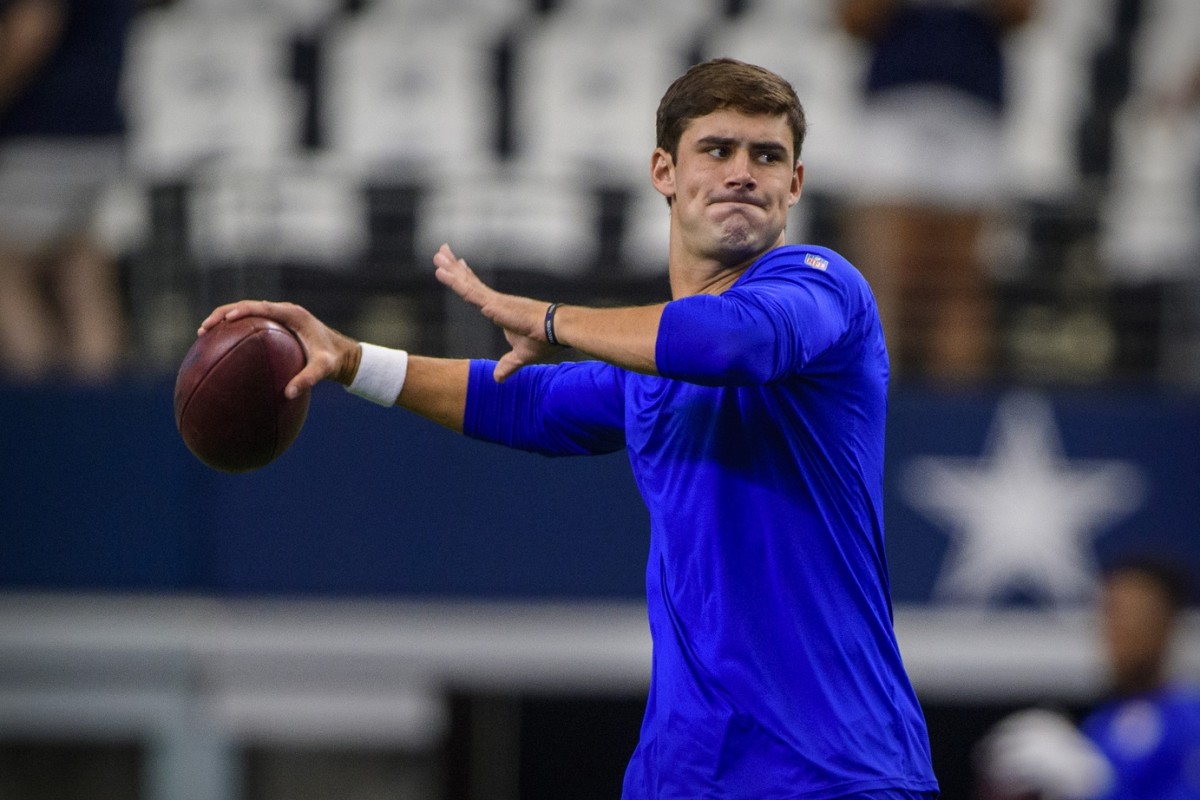How the Giants might tailor the offense to fit Daniel Jones' strengths

It happened sooner than many expected, but after the New York Giants fell to 0-2 for the third straight season, the team's brass decided to rip off the band-aid and name Daniel Jones as the franchise's new starting quarterback.
This is a move for the future, giving the Giants as much time as possible to evaluate Jones and his development as (hopefully) their franchise quarterback.
Realistically, the Giants have three years before the team must make a decision whether or not to commit to a fifth-year option that could pay Jones $30 million.
In years past, teams would get years to evaluate and develop young quarterbacks before committing to them for the long term. But in an age where a franchise passer on his rookie deal is the greatest competitive advantage an NFL team can have, teams need to short-circuit the learning process as much as possible.
The good news is that head coach Pat Shurmur already runs a very quarterback-friendly offense which includes several things which Jones is already used to doing.
However, if the Giants want to get the most out of Jones right away, they will also have to make some changes to their base offense to accommodate the rookie.
The most obvious change to the Giants' offense will be to go back and adopt plays and concept with which Jones is running in live game situations.
Here is a look at how the offense could potentially be different under Jones this year.
Limit his reads
At Duke, the overwhelming majority of Jones' passes were off of one-read concepts--of his 392 attempts his final year at Duke, 263 were to his first read.
While much is made of a quarterback's arm talent--and many are speculating as to what Jones' athletic ability could bring to the Giants' offense--a quarterback's greatest asset is the ability to process information quickly and make good decisions.
By increasing the number of quick reads and using similar concepts to the ones David Cutcliffe used at Duke, the Giants will limit the amount of data they ask Jones to process early in his career which will allow him to play faster and not be gummed up by lengthy progressions.
Let Saquon carry the load
The Giants are betting that Jones will be their next franchise quarterback, but for now, they don't want to put too much on his plate.
In the first two weeks of the season, we saw Eli Manning drop back to pass 45 and 44 times as the Giants struggled to overcome a porous defense. That is not a great position in which to put a rookie passer.
Instead, the Giants should--and likely will--put the ball in Saquon Barkley's hands.
The running back has the ability to out-athlete some of the most elite athletes in the world and turn any given play into a highlight reel moment.
There is also the fact that the Giants' receiving corps just isn't very strong right now and struggles to create separation, which further emphasizes the importance of putting the ball in the running back's hands.
Use Bootlegs and Rollouts
These are already in the Giants offensive playbook as we saw Eli Manning execute them fairly regularly in the 2018 season – and actually have a higher passer rating on those plays than Patrick Mahomes.
Bootlegs help a quarterback in multiple ways. First, they help get them out of the pocket and away from pressure, giving them more time to throw.
Next, they change launch angles and throwing lanes, stressing the defense which is prepared for the ball to be delivered from behind the offensive line.
And finally, they cut the field in half, helping to speed up the quarterback's mental process.
This is where many believe Jones' athleticism will help the Giants offense, but it is also one of the major ways in which the Giants' offense can help him.
Play-action and RPOs
In looking at how the Giants can make some quick adjustments to improve their offense, I mentioned how effective play-action passes can be at simplifying the defense and creating open throwing lanes for the quarterback.
In this, the Giants should take a page from the New York Jets' book--no, not what they have been doing with Sam Darnold, but rather what they used to do with Mark Sanchez.
Early in Sanchez's career, back when he was “The Sanchize,” the Jets' offense was primarily based on play-action and roll-outs.
They ran a quick, efficient, and simple ball-control offense for the first two years of his career and he executed it well.
Play-action is a powerful tool in the offense's tool belt, and the Giants can't be shy about employing it.
Similarly RPO (Run Pass Option)” plays, not to be confused with “Read-Option” plays, are a newer take on the play-action pass.
These plays, which have bubbled up from the college ranks in recent years, are essentially a run and pass called at the same time.
The quarterback then reads one player who is put into a conflict between defending the run and the pass, and then chooses whichever option the defender is not defending.
RPOs are very difficult for defenses to cope with, but haven't been significant parts of the Giants' offense under Pat Shurmur. It could be time to put those plays into the game plan.





